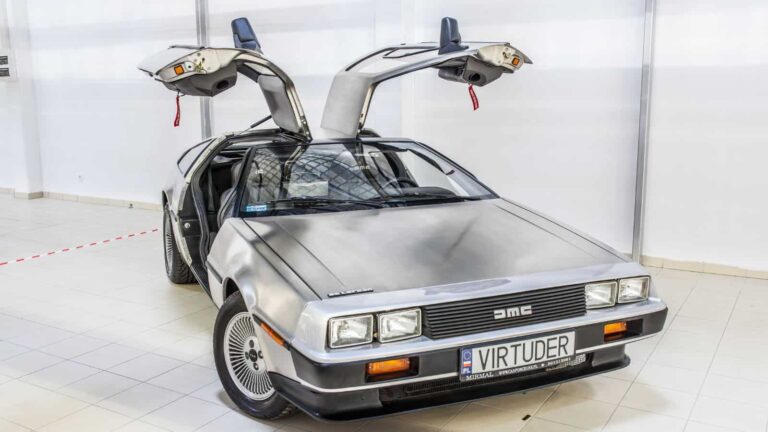Most inventions don’t end up making a big impact, and these products, once touted as groundbreaking, have since become collector’s items and serve as lessons in overblown promises. Ultimately, they failed to make the difference they claimed they would. Here are 17 such inventions that fell short of changing the world.

Google Glass, a brand of smart glasses, was released as a prototype in 2013 before becoming available to the general public the following year. Investopedia explains the product failed to prosper because of “concerns about its price, safety, and privacy” and lasted “less than a year on the market.”
The Hoverboard

Hoverboards were wildly popular in the mid-2010s, but issues quickly emerged. Due to faulty batteries, hoverboards regularly caught fire and were involved in accidents, and legislation in cities worldwide limited their use in public spaces. Today, some still use them, but they have failed to become widespread products.
New Coke

New Coke was a major failure for Coca-Cola. The company introduced the new soda formula in 1985 to compete with Pepsi’s sweeter taste. However, customers weren’t impressed by New Coke, and the soda quickly reverted to its original formula, which was rebranded as “Coca-Cola Classic.”
The Ford Edsel

The Ford Edsel was named after Henry Ford’s son, the company’s president from 1919 until 1943. It was marketed as the “car of the future,” but it’s today synonymous with failure. Britannica explains that bad timing, “ineffective marketing, flawed design, a high purchase price, and poor workmanship” led to a “consumer blowback” of the model.
Betamax

Betamax is famous for losing the videotape format war to VHS. Despite offering superior video quality, it was more expensive and had a shorter recording time than VHS, which led to low sales. Today, Betamax is often cited as an example of a better technology losing out to a rival product due to a poorer marketing strategy.
The Sinclair C5

This small, battery-powered vehicle was launched by Sir Clive Sinclair, one of the UK’s best-known millionaires, in 1985. However, the British media and public were much less enthusiastic about the C5 than Sinclair. Poor reviews and safety concerns, along with a short battery range and a maximum speed of just 15 miles per hour, led to a meager 5,000 sales.
WebTV

WebTV was introduced in 1996 with the aim of integrating the Internet with television viewing. However, the technology was initially too advanced for the slow dial-up connections and lack of digital content of the late ‘90s and was absorbed into MSN in 2001.
Juicero

The Juicero Press was launched to major fanfare and retrieved enormous funding from investors from 2014 to 2017. However, in 2017, it was revealed that the company’s juice packs could be squeezed just as easily by hand. The expensive juicer was criticized as overly complex, and a much cheaper product that didn’t require a WiFi connection could have produced the same quality of juice.
Theranos

Theranos is infamous for promising a revolution in healthcare with its blood-testing technology and later being revealed as fraudulent. Its founder, Elizabeth Holmes, modeled herself on Steve Jobs and attracted hundreds of millions in investment and endorsements from politicians. In 2015, its technology began to be exposed as a fraud, and today, Holmes is serving an 11-year prison sentence for wire fraud.
The DeLorean DMC-12

The DeLorean DMC-12 owes its iconic status to Back to the Future and is praised by vintage car enthusiasts for its gull-wing doors. Despite this beloved status, the car suffered from performance issues and high costs and was a commercial failure.
Nokia N-Gage

The Nokia N-Gage was marketed as a combination phone and gaming console but was mocked for its awkward design and poor usability. Nokia’s attempts to lure gamers away from Nintendo’s Game Boy Advance led to just three million sales, and the N-Gage earned the unfortunate nickname “taco phone.”
Microsoft Zune

The Microsoft Zune was launched to compete with Apple’s iPod and possessed some innovative features. However, the Zune couldn’t match the iPod’s dominance and was discontinued after six years.
Segway PT

The Segway PT was initially hyped by its creators as an urban transportation revolution that would make short trips with cars and trucks obsolete. However, as CNN notes, it “was ahead of its time, but not in a good way.” Its hefty initial price tag increased over time as the company struggled to reduce the cost and the product developed a “nerdy” reputation. Only 140,000 units were sold during the product’s lifetime.
LaserDisc

The LaserDisc was the first commercial disc storage device for films and television shows. Its discs were huge, with a diameter of 12 inches, dwarfing later products such as DVDs and CDs. LaserDisc offered higher-quality video and audio than VHS or Betamax, but its high costs and lack of recording ability led to low sales. However, it was popular in some countries, like Japan, Hong Kong, and Singapore, and remains a niche product that collectors love.
HD DVD

Toshiba developed HD DVD as the successor to DVD, but today, it’s best remembered for losing the HD disk war to Sony’s Blu-ray, similar to Betamax decades earlier. How-To Geek argues that Sony’s “position as a movie studio and general entertainment giant” and including a Blu-ray player in every PS3 led Toshiba “to effectively throw in the towel” in 2008. However, it was essentially a pyrrhic victory, as online streaming has largely replaced demand for Blu-ray.
Pets.com

Pets.com was a victim of the dot-com crash of 2000 but still had a successful marketing campaign. However, despite high sales, its pet supplies failed to make a profit, and it was liquidated after only two years.
E.T. the Extra-Terrestrial

This 1982 video game adaptation of E.T. by Atari is remembered as one of the biggest flops in video game history and for contributing to the industry crash of 1983. Millions of the poor quality game’s unsold cartridges were infamously buried in a landfill in New Mexico.

